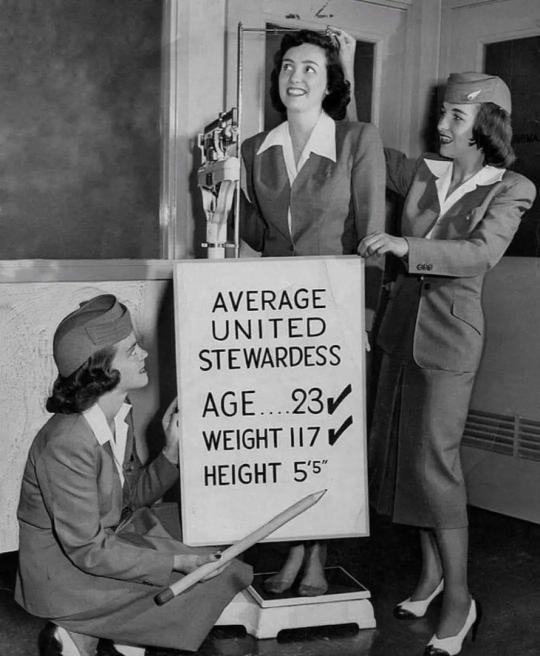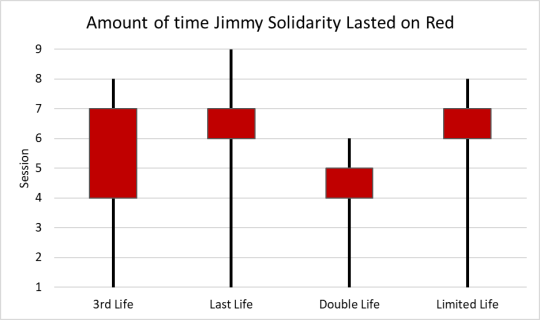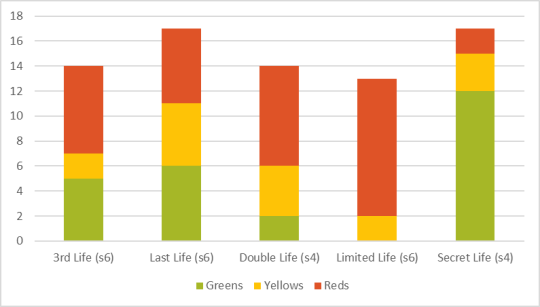#marketing statistics
Explore tagged Tumblr posts
Text

1 note
·
View note
Text
101 SEO Stats to Reference Everywhere in 2025
Introduction: Why SEO Statistics Still Matter in 2025
In the constantly changing online world, information is no longer a nicety — it’s necessary. Whether you’re optimizing a blog article, selling an SEO plan to a client, or defending budgetary allocation, strong statistics lend credence to your plan. That’s why this guide — “101 SEO Stats to Reference Everywhere in 2025” — is here: to equip you with the most up-to-date, applicable SEO statistics out there.
What This Guide Covers
This post isn’t just a random list of numbers. It’s a strategic resource, curated from trusted industry sources like Google, Moz, Ahrefs, HubSpot, SEMrush, and more. You’ll find stats across key SEO categories, including:
Organic Traffic Trends
Keyword Rankings & Search Intent
Mobile & Voice Search Usage
Core Web Vitals & Page Experience
Backlink Data & Authority Metrics
Local SEO Performance
Zero-Click Search & Featured Snippets
AI, Visual, and Video Search Trends

SEO 2025: What’s New
Search algorithms are smarter, more contextual, and more user-centric today. AI content, E-E-A-T (Experience, Expertise, Authoritativeness, Trust), and Core Web Vitals are all now center stage in Google’s algorithmic systems. Mobile-first indexing is now universal, and voice and visual search are affecting how we build and optimize for content.
This guide reflects these changes. It provides insights into how users are searching, how SERPs are evolving, and what it takes to stay visible in a competitive SEO landscape.
Who Should Use These Stats?
Whether you’re a solo content creator or a large agency managing hundreds of campaigns, this list is designed for everyone who touches SEO:
SEO Specialists: Improve audits and reports with concrete benchmarks.
Content Marketers: Align content with search behavior and ranking trends.
Digital Agencies: Leverage stats to support strategy proposals and inform clients.
Marketing Teams: Defend SEO budget and resource allocation.
Business Owners: Know how SEO affects online visibility and ROI.
Make Better Decisions with Data
Great SEO is not based on assumptions — it’s based on data. These 101 stats will inform you of gaps, discover opportunities, and future-proof your search strategy. Utilize them within your slide presentations, blog articles, campaign summaries, or even LinkedIn updates.
Bookmark this post. Share with your team. Mention it on your strategy calls.
Because in 2025, the best SEO plans begin with the proper stats.
#101 SEO Stats#SEO statistics 2025#search engine optimization stats#SEO trends 2025#digital marketing stats#SEO data#ranking factors 2025#SEO performance insights#search trends#marketing statistics
0 notes
Text
How is Statistics Used in Marketing?
Statistics plays a vital role in marketing, helping businesses understand their target audience, analyze market trends, and make data-driven decisions.
In this digital age, where consumers are bombarded with countless advertisements and marketing messages, it has become crucial for businesses to leverage statistics to stand out from the competition.
One of the primary uses of statistics in marketing is to conduct market research. This involves collecting and analyzing data on consumer behavior, preferences, demographics, and more.
By understanding the needs and wants of their target audience, businesses can tailor their marketing strategies to effectively reach and engage potential customers.
“Globally, corporate branding and market research were ranked top, with 82% and 84% of marketers respectively citing these as having significant impact” - LinkedIn’s 8th Annual Technology Buying and Marketing Research Report
For example, through statistical analysis, marketers can identify the most popular products or services within a particular market segment.
This knowledge allows them to create targeted advertising campaigns that highlight the unique features and benefits of their offerings.
By leveraging statistics, marketers can optimize their messaging to resonate with the specific needs and desires of their target audience.
Statistics also helps businesses track the success of their marketing efforts.
By measuring key performance indicators (KPIs) such as click-through rates, conversion rates, and customer engagement metrics, marketers can evaluate the effectiveness of different marketing channels and campaigns.
This data-driven approach enables businesses to identify what works best for their target audience and make informed decisions about resource allocation.
“Look for content that aligns with your marketing and business KPIs to determine which posts are worth throwing some extra dollars behind” – Sprout Social
Moreover, statistics is crucial for conducting A/B testing in marketing. This involves comparing two versions of a marketing campaign or website to determine which performs better.
By using statistical analysis, marketers can confidently identify which version leads to higher conversion rates or engagement levels.
This allows them to refine their marketing strategies and continually improve their results over time.
“The golden rule of A/B testing is to test only one element at a time” – Klaviyo
Another important application of statistics in marketing is predictive analytics. By analyzing historical data and identifying patterns, marketers can make predictions about future consumer behavior.
For instance, by analyzing past purchase patterns, marketers can anticipate when a customer is likely to make a repeat purchase or when they might be interested in a complementary product.
This enables businesses to proactively target customers with personalized offers, increasing the likelihood of conversion.
“As marketing budgets undergo strict scrutiny, analytics provide leaders with the insight they need to optimize spend and lower acquisition costs, further proving the value of marketing” – Salesforce Research [State of Marketing, 8th Edition, 2022]

Image Source - HubSpot’s 2023 State of Marketing Report
In summary, statistics is an invaluable resource in marketing.
It helps businesses understand their target audience, optimize their marketing strategies, track the success of their campaigns, conduct A/B testing, and make data-driven predictions.
By leveraging it, businesses can gain a competitive edge in today's crowded marketplace and effectively reach and engage their customers.
Here's related information that you may also find helpful – Marketing Statistics [Comprehensive Data of almost all verticals of Digital Marketing].
0 notes
Text

#socialism#communism#capitalism#free market#freedom#soviet union#economy#history#data#statistics#politics
264 notes
·
View notes
Text
DON'T FORGET!!!

50 is a rough page estimate. The accurate length is 15,883 words.
If you want to visualize and compare it, I've graphed the length of each entry and given some other entry stats in another post linked here.
Google says it takes approximately 5 minutes to read 1000 words, so plan accordingly!
#dracula daily#dracula daily statistics#longest entry#October 3rd#October 2nd#A day full of Action#book data#beware#town crier#50 page entry#approximately#alt text#market peaches
896 notes
·
View notes
Text
"Why doesn't everyone just use master balls if they're the best kind of pokeball" I mean you're not out there buying Gucci handbags when the $10 purse you bought from Walmart works just fine now are you
#pokemon#pkmn#outdesign posts things#also they don't seem to have been mass produced probs because there's not enough of a market for them#'average person owns hundreds of powerful pokemon' statistic a lie. average person owns a few low level pokemon as pets#red palette town who has a full pokedex and has encountered mewtwo is an outlier adn should not be counted
158 notes
·
View notes
Text
listen i've never been to Europe so i can't confirm or deny but judging on Xia Fei's experiences alone (almost getting drowned on a modeling set, almost being beaten to death with bats and beer bottles at a pub for rooting for the wrong team) i feel like not enough people are talking about how openly hostile and bloodthirsty the ppl there are
#tho to be fair i'm convinced that whatever the crime statistics are in China#theyre largely skewed by the street that the Time Photo Studio is located on#since wherever lg/cxs live is like the spiders georg with a serial murder there happening every other day#link click is just an elaborate marketing scheme to get me to stay home where its safe#link click#kelly liveblogs#link click spoilers#yingdu chapter
20 notes
·
View notes
Text

United Airlines stewardesses, 1948
#vintage#midcentury#flight attendants#average stewardess#statistics#sign#1940s#mid-century#air travel#age#height#weight#marketing photo#air lines#retro#40s fashion#mid century
79 notes
·
View notes
Text
out of sheer curiosity
#dropout tv#dropout#i’m literally just curious#sam reich doing ur marketing statistics for you. what do the people want
74 notes
·
View notes
Text
I Am Afraid For This Man


That being said, I do actually have faith because other than the enderman kill in Double Life, he always lost his last life because another player killed him (EDIT: I was wrong, see end for note*) and I doubt anyone is going to be actively trying to kill him next session.
Here's a chart showing how many of each life color were still alive the session before Jimmy permadied compared to how many there are as of Secret Life Session 4:


I can't see anyone hunting him down when TWELVE greens are still left. By this time in every other season, there were 8, 9, 2, and 0 greens, respectively. This season is shaping up to be the longest of the life series yet but I'm guessing it'll be about 7 or 8 sessions.
Even ignoring the fact that the only other Red on the server is Jimmy's ally it would be actually genuinely cruel to intentionally take someone out of the series this early. No one would ever do that, no matter how funny it would be to ensure Jimmy gets out first.
In conclusion: I think the only way Jimmy gets out next session is via the environment and I have faith that he's got at least two more episodes left in him, knock on wood. (I use numbers to fuel my delusions)
*EDIT: Actually I forgot he permadied in Limited Life from simply walking off Bread Bridge of his own free will, my delusions will now fueled be by prayer and prayer alone
#jimmy i did statistics for you don't make me a fool#also this is 100% not how a candlewick graph is meant to be used but it gets the point across#and i doubt there's very many life smp enjoyers who are also avid stock market analysts so i'm not worried about people being confused#simply Deal With It#saf does stats#jimmy solidarity#solidaritygaming#statistics#secret life#secret life smp#secret life spoilers#slsmp#life series#trafficblr
103 notes
·
View notes
Text
the tumblr press page says 48% of users are Gen Z, so aged 12-27. and this website says 40% Gen Z and 30% Millennial although idk how trustworthy that is. either way those are unfortunately useless categories for purposes of figuring out who is rent-paying age versus who just started highschool
#I wonder if that’s just a function of the fact that they don’t seem to collect as much data as like Facebook or Twitter#at least like raw demographics anyway#and talking about % Gen Z users is obviously marketing language not statistical language#anyway that’s younger than I thought like I thought more millennials would be on here#That’s still a good chunk of adults though
43 notes
·
View notes
Text
Real Talk:
I find it very funny that people come in droves screaming, “No Kings!”. They're a bunch of hypocrites that most definitely want a King, went radio silent or make excuses for their previous King for the past four years. It's almost like leftists love tyranny when it's their gang doing it. It's almost like leftists are pro-slavery and don't believe in freedom.
#blackwolfmanx4#ancap#libertarian#real talk#insane leftists#democracy is not freedom#democracy is a false god#idolatry#leftist hypocrisy#no kings#statism#authoritarianism#left wing statists#left wing idiots#abolish the state#abolish the government#end the fed#free the market#fuck democrats#fuck republicans#anarchy#anarchism#true punks hate the government
6 notes
·
View notes
Text
also for anyone wondering how the Wicked movie would affect ticket sales for the Broadway production (I know I was), I have you covered.

8 straight weeks at capacity, which is the longest streak they've had by far since the 2011-12 season (13 straight weeks over the 2010-11 and 11-12 season)
#broadway#love statistics#wicked#guessing the insane marketing for the movie really helped the broadway show out too
8 notes
·
View notes
Text
I think y'all wildly overestimating where your target market is hanging out

Reblog for sample size yadda yadda
#he speaks#polls#tumblr polls#private healthcare#health insurance#australia#60s#1960s#20th century#target market#statistics#sample size
44 notes
·
View notes
Text
I'm gonna be honest with you guys, I don't think it's useful to conflate "available for other reasons, but also inadvertently ends up benefiting some disabled people" with "is an accessibility feature". I think that intention actually ends up being kinda relevant here.
#no doubt some. or possibly even many! disabled and housebound people have benefitted from the proliferation of delivery#apps in recent years.#but that is not the same as ''food delivery is meant for the disabled“#that's just not true. they are not who doordash is marketed towards. they are not the intended audience.#and its statistically impossible for them to be the majority of doordash/uber eats/etc's users. like on multiple levels.#its rude to make assumptions about any individual's life & ability but its not unreasonable to assume that like.#the majority of doordash's users do not capital n Need it. that's kind of a different statement.#and given that assumption some criticism of delivery apps as a social phenomenon is warrented.#this isn't like wheelchair ramps this is like plastic straws. yk.
21 notes
·
View notes
Text


okayyyyy I've got something going here
#★ phantompost#Ignore the way theyre both lesmes quotes benedicta says One thing ever#what are we fuckin with here i need market samples. STATISTICS
3 notes
·
View notes